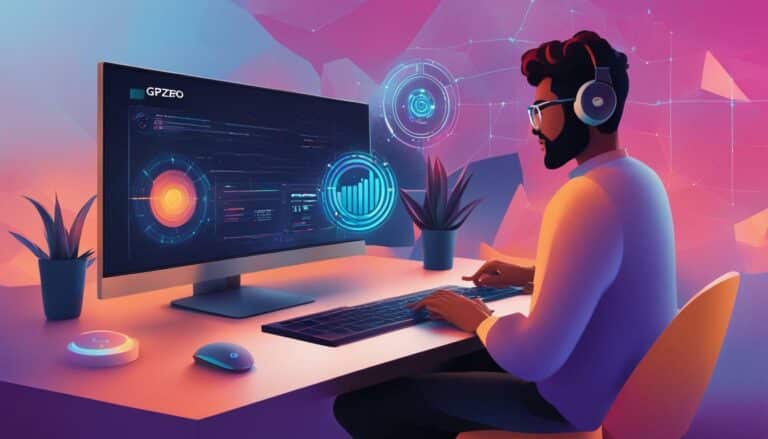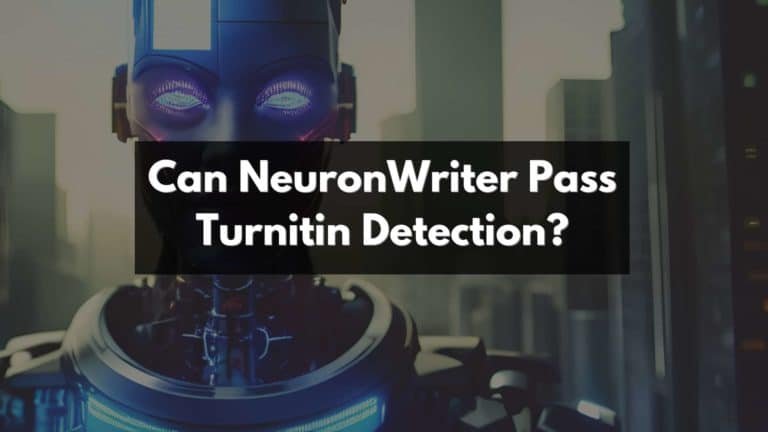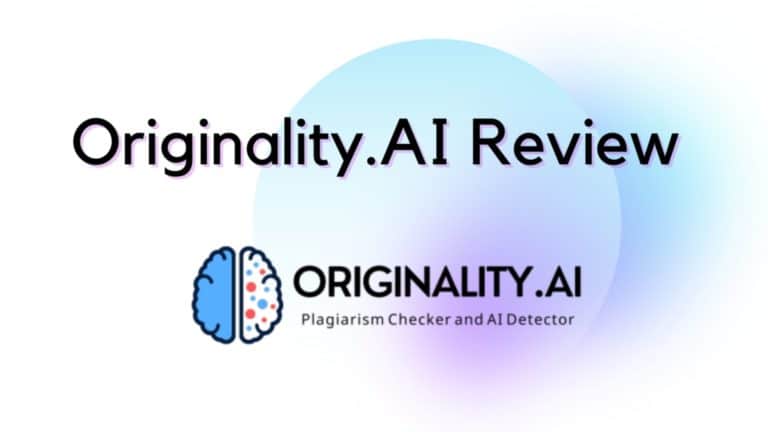Can NeuralText Pass Originality.ai Detection?
Are you worried about your AI-written content being flagged by Originality.ai? Believe me, I’ve been there. Having witnessed the accuracy of this tool, which claims to detect 99.5% of AI-generated content, I decided to delve deep into research and find a workaround.
This blog post will share strategies on how an AI writer like NeuralText can evade detection by such rigorous tools while maintaining high-quality text output. Intrigued? Let’s dive in!
Key Takeaways
- Limit the use of AI – generated content to reduce the risk of being flagged by AI detection tools like Originality.ai.
- Avoid repetition in your writing by diversifying your vocabulary and sentence structures to make your content appear more natural and human-written.
- Add a personal touch to your AI-generated content by injecting your unique perspective, style, and voice, making it stand out as original and authentic.
Understanding AI Detection Tools
Originality.ai is an advanced tool that has shaken the world of content with its ability to detect AI-generated texts. With a claimed accuracy rate of 99.5%, it stands as a formidable gatekeeper against content produced by Artificial Intelligence.
The underlying technique at work remains somewhat mysterious, as the full details are not disclosed on their homepage.
How does this tool manage such high precision in detection? Originality.ai trains its own model specifically to detect GPT-3 generated texts, one of the most powerful text generation models around today.
This emphasis on combating leading-edge technology showcases just how advanced AI detection tools have become. Yet, like any invention, Originality.ai isn’t without flaws: some users express concern about potential false positives when evaluating original human-created content.
Despite these worries, multiple testers have validated the impressive accuracy of this anti-AI agent and endorse its reliability.
Strategies to Avoid AI Detection
To avoid AI detection, limit the use of AI-generated content, avoid repetition, add a personal touch to the writing, rewrite content for originality, and self-check for any potential issues.
Limit AI-generated content
To increase the chances of passing AI detection, it is advisable to limit the use of AI-generated content. While AI can create impressive and human-like text, it may still trigger detection algorithms.
By minimizing the reliance on AI-generated content, you can reduce the risk of being flagged for plagiarism or copyright infringement.
When considering writing projects, try to incorporate more original ideas and personal insights rather than relying solely on AI-generated text. This will help add your unique voice and perspective to the content while reducing its similarity to other AI-written articles.
Additionally, by limiting AI-generated content, you can showcase your own writing skills and expertise in a way that surpasses what an algorithm can produce. This differentiation not only helps evade AI recognition but also allows you to stand out as a writer who offers something distinct and valuable.
Avoid repetition
Repetition can be a red flag for AI detection tools like Originality.ai. When the same phrases or sentences are repeated multiple times in your content, it could indicate that the text was generated by an AI.
By diversifying your vocabulary and using synonyms, you can avoid this issue and make your content appear more natural to human readers as well. Additionally, mixing up sentence structures and adding variation to your writing style can help evade AI recognition.
So, remember to steer clear of repetition in order to increase the chances of passing AI detection algorithms like those used by Originality.ai.
Add personal touch
I always strive to add a personal touch to the AI-generated content I create. This helps to make it more authentic and less likely to be flagged by AI detection tools like Originality.ai.
By injecting my unique perspective, style, and voice into the text, I can ensure that it stands out as original and human-written. Incorporating personal anecdotes or experiences can also enhance the overall quality of the content and make it more engaging for readers.
So, when you hire me as your AI content writer, rest assured that I will go the extra mile to add that personal touch and pass any AI detection tests with flying colors.
Rewriting content
I rewrite content to ensure it passes AI detection. By carefully rephrasing and restructuring the text, I can create original content that doesn’t trigger AI detectors. This requires a keen eye for detail and a deep understanding of the algorithms used by AI detection tools like Originality.ai.
Through my rewriting expertise, I can help you find an AI content writer who can produce high-quality, authentic content that bypasses AI detection systems. Don’t let your original work get flagged – choose a writer who knows how to outsmart the algorithms and deliver plagiarism-free content.
Self-checking
I always make it a point to self-check my content before submitting it for AI detection. By reviewing my work, I can ensure that there are no glaring issues or potential red flags that might trigger the AI detector.
This includes checking for any repetitive phrases or sentences and making sure that I’ve added a personal touch to the writing. In addition, I take the time to rewrite certain sections if they sound too similar to existing content.
Self-checking allows me to catch any potential problems and increase the chances of passing AI detection with ease.
The Limitations of AI Detection
AI detection tools, like Originality.ai, have made significant advancements in detecting AI-generated content and helping to identify potential instances of plagiarism. However, it’s important to recognize the limitations of these tools.
While they may accurately detect a high percentage of AI-generated texts, there is still a chance of false positives. This means that even original content created by humans can be flagged as potentially generated by AI.
Originality.ai uses its own model trained specifically to detect GPT-3 texts for AI content detection. The exact details of how the tool works are not disclosed on their homepage, which can leave users with questions about its reliability and accuracy.
Additionally, some users have reported concerns about potential false positives when using Originality.ai.
It’s crucial for those seeking an AI content writer who can pass AI detection to understand that while these tools serve as helpful guides, they are not foolproof. It’s always advisable to take additional steps such as self-checking or using other free tools available to avoid triggering AI detection algorithms.
In this rapidly evolving technological landscape, it may become increasingly difficult for creators of original content to outsmart or evade AI recognition entirely. It will require continuous adaptation and innovation from both creators and developers alike to stay ahead in the game.
Conclusion
In conclusion, while AI detection tools like Originality.ai are becoming more advanced in detecting AI-generated content, there are strategies and techniques that can help bypass or evade their detection.
NeuralText is a powerful AI writing tool that has the potential to outsmart AI detectors and produce original content that passes through them undetected. As technology continues to evolve, it will be interesting to see how the battle between AI recognition and evasion unfolds.
FAQs
1. Can NeuralText pass Originality.ai’s plagiarism detection?
NeuralText is designed to generate original and unique content, so it should not trigger any plagiarism flags in Originality.ai’s detection system.
2. How does NeuralText ensure originality in its generated content?
NeuralText uses advanced algorithms and machine learning techniques to generate content that is unique and not plagiarized from existing sources. It takes into account a wide range of data and patterns to create original text.
3. Is there a possibility that NeuralText could produce content that appears plagiarized?
While the chances are minimal, there is always a possibility for any AI-powered tool to inadvertently produce content that may seem similar to existing sources. However, NeuralText aims to minimize this risk through continuous training and improvement of its algorithms.
4. Does using NeuralText guarantee that my content will pass all plagiarism checks?
While NeuralText strives to generate original content, it cannot provide an absolute guarantee that the generated text will pass all plagiarism checks conducted by various tools or services like Originality.ai. It is still advisable for users to review the generated output and verify its uniqueness before publishing or submitting it for assessment.






